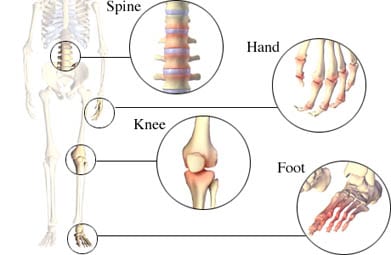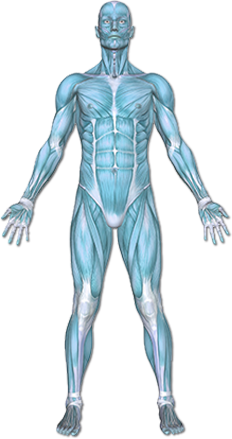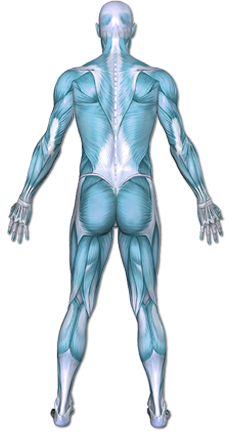Osteoarthritis of the Spine
Articular cartilage is the tissue located at the end of bones. It can deteriorate over time causing a common condition called osteoarthritis. It can become worse over time and in many people, can become debilitating.
Normally, cartilage is the shock absorber in a joint. It absorbs energy from jarring movement, protecting the bone and other tissue in the area. Cartilage is naturally a very slippery material. It helps the joint glide smoothly. When the cartilage begins to show wear and tear, the lining of the joint becomes inflamed and painful. This makes the joint stiff.
Osteoarthritis is an extremely common ailment of aging. In fact, it’s the most common joint condition throughout the world. There are about 27 million people with osteoarthritis in the US alone.


Copyright © Nucleus Medical Media, Inc.
This content was created using EBSCO’s Health Library
The causes of osteoarthritis are unknown.
This content was created using EBSCO’s Health Library
A risk factor is something that increases your likelihood of getting a disease or condition. It is possible to develop osteoarthritis with or without the risk factors listed below. However, the more risk factors you have, the greater your likelihood of developing osteoarthritis. If you have a number of risk factors, ask your doctor what you can do to reduce your risk. Medical Condition You have an increased risk of developing osteoarthritis if you have or have had:
- Past injury to a joint
- Previous surgery to the joint
- History of infection in a joint
- Inherited abnormalities of the joint
- Weakness of muscles around a joint
- Acromegaly (a pituitary disorder)
- Paget’s disease of bone
Age
Increasing age puts you at increased risk for osteoarthritis.
Gender
Osteoarthritis is more common in women than in men.
Genetic Factors
Osteoarthritis tends to run in families.
Other
You are more likely to develop osteoarthritis if you:
- Are overweight
- Work at a job or participate intensely in an activity that requires a lot of lifting, squatting, or repetitive joint use
This content was created using EBSCO’s Health Library
Symptoms of osteoarthritis include the following:
- Pain in the joint
- Most commonly affected joints are those of the knees, hips, hands, or spine.
- Pain usually increases when the joint is used or stressed.
- Pain is usually decreased by resting the joint.
- May be described as a dull, achy pain or a sharper, stabbing sensation.
- Stiffness
- Stiffness can make everyday activities difficult, such as leaning down to pick something up, putting on shoes, opening a jar, walking, or climbing stairs.
- Stiffness occurring first thing in the morning is common, usually lasting for 30 minutes after you resume activity.
- Stiffness after any period of inactivity is common (such as after sitting still for a couple of hours in a movie theater or on an airplane).
- Stiffness decreases your range of motion, so that you can’t bend or unbend a joint as far as you normally could.
- Feeling of instability in the joint
- Grating or creaking sound when you bend or unbend your joint
- Your joint may develop an abnormal appearance:
- It may appear inflamed, red, swollen.
- It may appear misaligned or misshapen.
This content was created using EBSCO’s Health Library
Osteoarthritis is usually diagnosed after your doctor has taken a careful history of your symptoms. A physical exam will be done. There are no definitive lab tests to make an absolute diagnosis of osteoarthritis. Certain tests, specifically x-rays of the joint, may confirm your doctor’s impression that you have developed osteoarthritis. Diagnostic Tests
- X-ray examination of an affected joint —A joint with osteoarthritis will have lost some of the normal space that exists between the bones. This space is called the joint space. The joint space is made up of articular cartilage, which becomes thin. There may be tiny new bits of bone (bone spurs) visible at the end of the bones. Other signs of joint and bone deterioration may also be present. X-rays, however, may not show much in the early stages of osteoarthritis, even when you are clearly experiencing symptoms.
- Arthrocentesis —Using a thin needle, your doctor may remove a small amount of joint fluid from an affected joint. The fluid can be examined in a lab to make sure that no other disorder is causing your symptoms, such as rheumatoid arthritis, gout, or infection.
- Blood tests —Blood tests may be done to make sure that no other disorder is responsible for your symptoms, such as rheumatoid arthritis or autoimmune diseases that include other forms of arthritis.
This content was created using EBSCO’s Health Library
Your therapist will educate you on pain-relieving techniques (such as ice) and decreasing or modifying painful activities. This diagnosis often occurs from muscular tightness/weakness which causes posture to get out of alignment. Years of activity with poor posture can lead to damaging the structures of the spine. Your therapist will educate you on proper stretching and strengthening exercises for the back. They may perform hands on, manual therapy techniques to further increase your joint flexibility. The final phase of rehab will involve strengthening during functional activities and education to prevent the injury from recurring again. If surgery is needed, your therapist will work with you to regain your strength and range of motion through education, exercise and manual therapy. They will teach and train you to perform functional activities with proper strength, endurance, and education, helping to avoid future injury.
This content was created using EBSCO’s Health Library
There are no real methods for preventing the development of osteoarthritis. However, following certain preventive measures may slow its progression. Such measures include:
Maintain an Appropriate Weight
Keep your weight in an appropriate range for your age, height, and body type. Carrying excess body weight can put increased stress on your bones and joints. By maintaining a healthy weight, you can reduce the stress on your body.
Avoid Certain Activities
Although exercise is good for your body, you may want to avoid activities that might injure your joints or that require intense, repetitive joint motion, or repetitive stress on “at risk” joints.
Begin an Exercise Program
Participating in a safe exercise program will strengthen your muscles, which will help support and stabilize your joints. These muscles help to absorb some of the energy, or shock, delivered to the limb.
This content was created using EBSCO’s Health Library
This content was created using EBSCO’s Health Library


